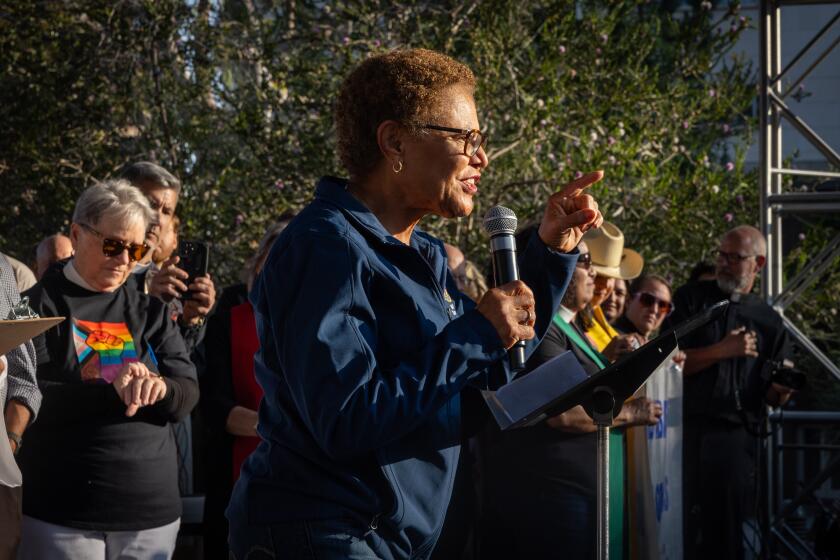The Bunker Hill That Is
- Share via
Bunker Hill in downtown Los Angeles is getting some outcroppings that make it one of the geological wonders of modern architecture, most pleasing to the human eye.
The most conspicuous mineral is the rose-brown granite that veneers the graceful trapezoidal towers of Crocker Center. The stone came from Finland, was cut and polished in Italy, then was shipped to San Pedro for final fitting before installation. There does not seem to be an hour in the day when light, natural or otherwise, does not make a spectacle of that material and those intriguing structures.
Another mineral marvel is now being mounted as red sandstone from India is applied to the Museum of Contemporary Art, just across Grand Avenue from Crocker Center in the rival California Plaza development. The cleft finish is an art form in itself. Giant blocks of the sandstone were pried by hand out of the ground in India, then fabricated --some in India and some in Japan--creating slabs an inch and a half or two inches thick. The surface of each slab shows the irregular natural pattern of the fracture like the face of an eroded mountain. Other pieces have been ground with 8-to-10-inch bands to vary the feel of the surface.
A third complementary stone, Oklahoma pink granite, will clad the lowest three floors of the California Plaza office and residential towers. This granite will not be as visible as the Finnish granite in Crocker Center, for the new California Plaza towers will be largely enclosed in a reflective glass skin. The glass skin on the 42-story first office tower in the project is within four floors of being completed. The reflective coefficient of the glass is of two types--more reflective on the south and west to enhance the building’s energy efficiency.
Crocker Center invites strolling. Outside, the terraces and plantings give access to diverting views enhanced by the trapezoidal shape that Skidmore Owings & Merrill gave to the buildings, making them seem less massive than they are. Inside, the glass-roofed Crocker Court at the feet of the buildings is refreshing, with Robert Graham’s sculptures of gymnasts so elegantly at play on the fountains of a perpetually flowering garden.
The Museum of Contemporary Art on the other side of the street will be the centerpiece of California Plaza. It is Arata Isozaki’s first design outside his native Japan. Its squat form and low glass pyramids, just taking shape, are a welcome contrast to the sheer heights of the glass towers.
The time has long since passed for sentimental reminiscing about the Bunker Hill that was. There is reassurance, however, in the kind of human-scaled space that can be found on the Bunker Hill that is. And there were never before rocks like these up on the hill.
More to Read
Sign up for Essential California
The most important California stories and recommendations in your inbox every morning.
You may occasionally receive promotional content from the Los Angeles Times.













